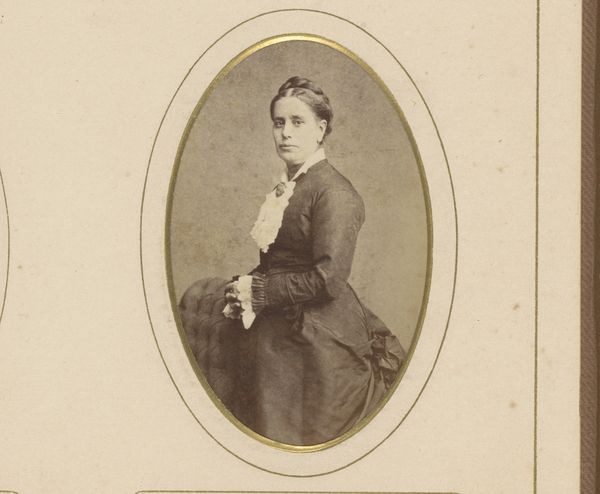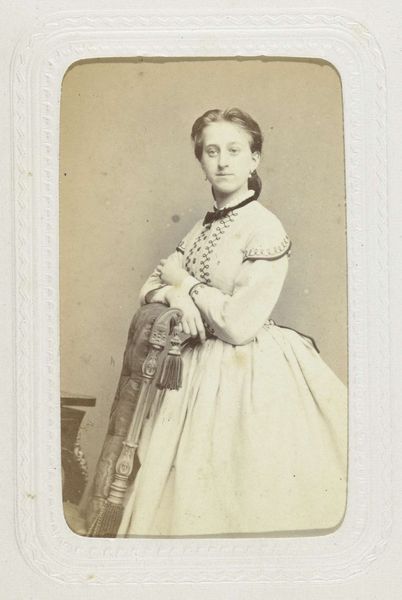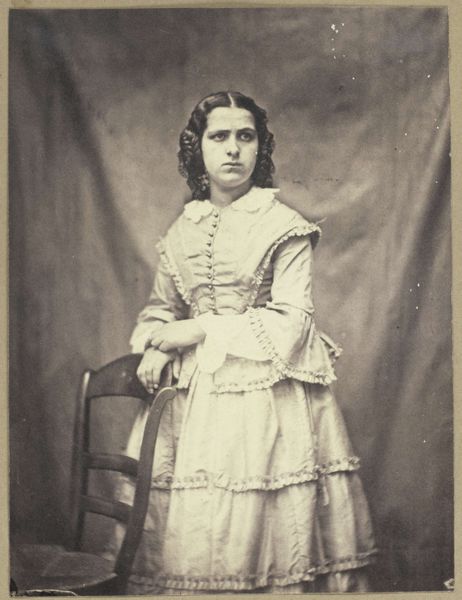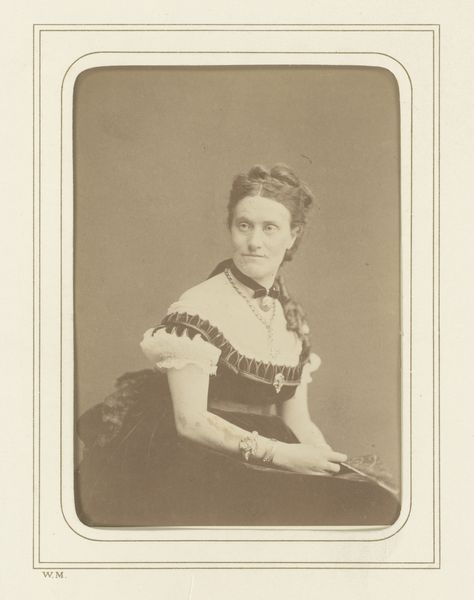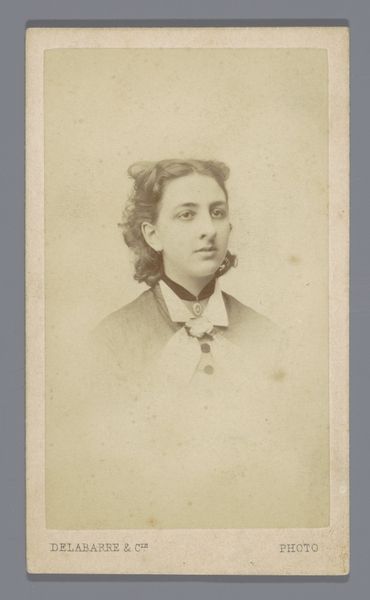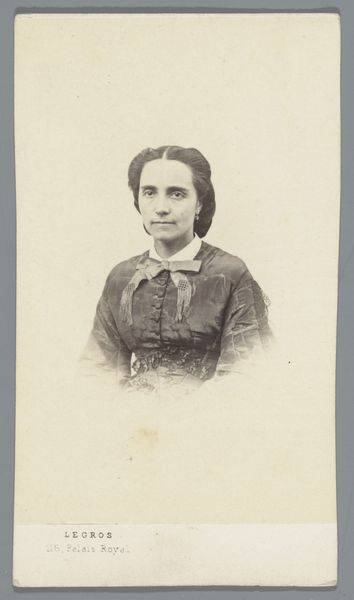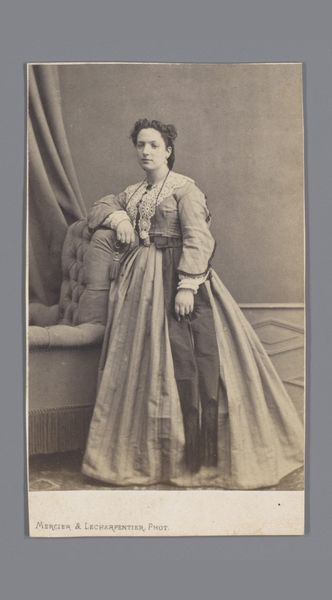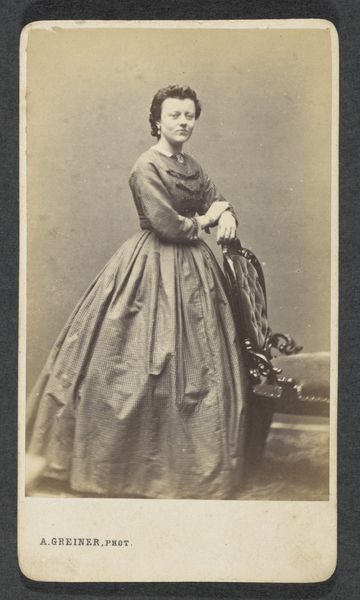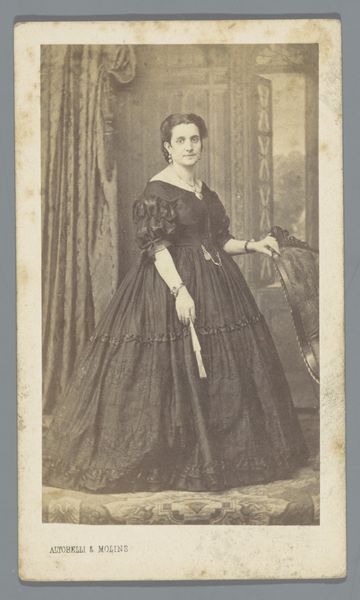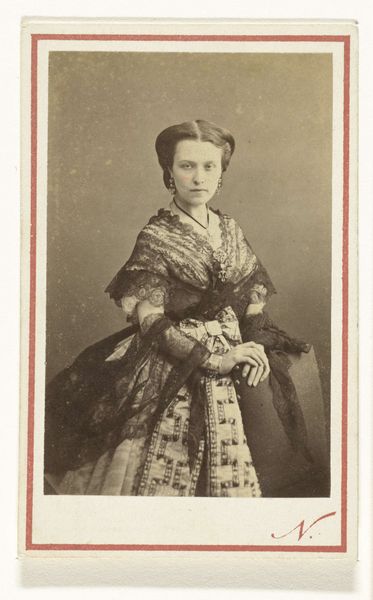
daguerreotype, photography, gelatin-silver-print, albumen-print
#
portrait
#
daguerreotype
#
photography
#
historical photography
#
gelatin-silver-print
#
19th century
#
albumen-print
Dimensions: height 135 mm, width 95 mm
Copyright: Rijks Museum: Open Domain
Editor: So, here we have a photograph titled "Portret van Loty van Braam," created sometime between 1861 and 1880 by Carel Eduard Westerborg. It looks like it was produced using various photographic printing techniques like albumen print and gelatin silver print. It’s incredibly striking just how composed she looks. What do you see when you look at it? Curator: I see a careful construction of identity. This isn't just a portrait; it's a statement about class and the sitter’s role within society. The expensive dress, the pose, even the photographic technique itself—the albumen and gelatin-silver—speak to a deliberate presentation of self. These early photographic processes weren’t accessible to everyone. Editor: So, you are saying it's not just capturing Loty's image but showcasing status. Curator: Precisely. Photography in the 19th century, particularly portraiture, became a tool for social mobility and representation. Consider who was commissioning and consuming these images. It wasn't the working class. These were members of the bourgeoisie solidifying their place in the social hierarchy. Look at the direct gaze; it challenges the viewer. Who do you think was the intended audience for an image like this? Editor: Family, maybe? And friends? It’s interesting to think about this photo being almost like an early version of a social media profile picture, carefully curated for a specific audience. Curator: Exactly! These images circulated within specific social circles, reinforcing existing power structures and aspirations. It speaks volumes about the politics of imagery during this period. Editor: I had never thought about portrait photography that way, as a social and political statement. Curator: Understanding the cultural context is key. Works of art often reflect the environment of the artists. This has been a very illuminating look into photography as a display of status and identity.
Comments
No comments
Be the first to comment and join the conversation on the ultimate creative platform.
